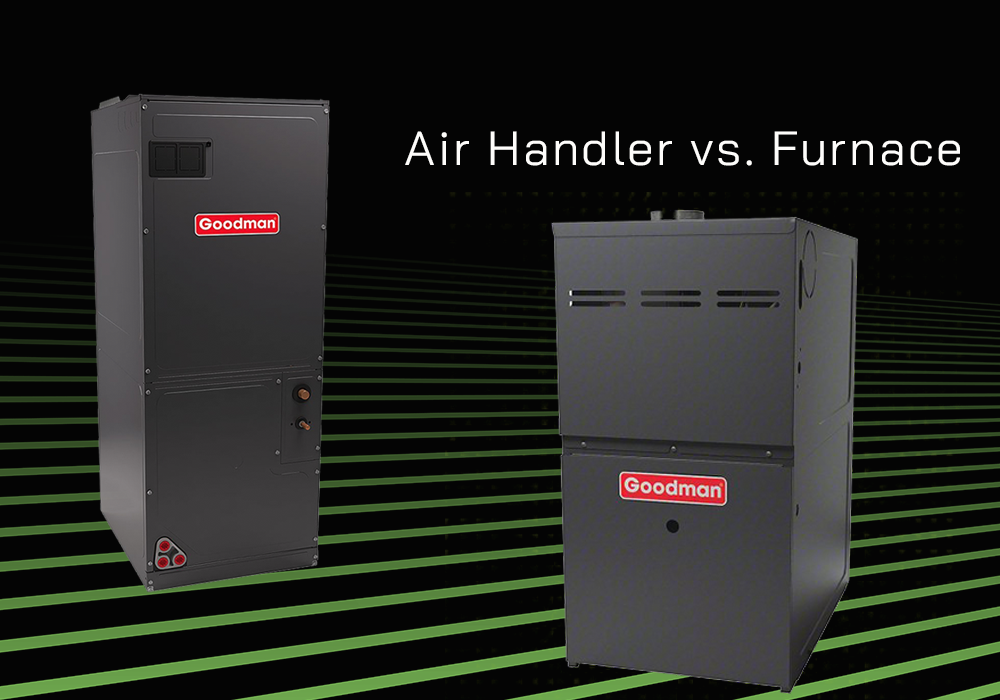
When it comes to heating and cooling systems, there are many components you may see on your quote. If HVAC lingo is like a totally new language for you, we’re here to explain two very common, core components you may see on your estimate for a replacement or repair: the air handler and furnace. Most people know what a furnace is, but don’t understand how it is separate from the rest of the system, or if it is separate from the rest of the system. They may also think the air handler and the furnace are the same thing! (They’re not.)
In this blog, we will explore the difference between an air handler and a furnace.
Differences between an Air Handler and a Furnace
The fact that a furnace creates heat and an air handler does not is the big difference. That’s the main distinction. But there’s a few other nuances:
#1 – A furnace is a heat source. An air handler is not.
An air handler distributes heat that is created by another appliance – a heat pump.
In the few locations of the US where heat is almost never needed, an air handler might be installed in a system with an AC rather than a heat pump.
#2 – All air handlers must contain a heat pump/AC coil. This is the corollary of them not making heat. They use the coil to distribute heat gathered outside.
Not all furnaces have a coil. If the system does not include central air conditioning, there is no need for a coil. If AC is part of the system, the furnace will contain a coil.
How Are an Air Handler and Furnace Similar?
As we’ve noted, they both contain a blower fan used to circulate heated and cooled air through your ductwork and grates.
Here are other similarities:
#1 – Single-speed and Variable-speed models are available. Single-speed blowers are used in single-stage furnaces and with single-stage heat pumps and air conditioners.
Variable speed blower motors are used in 2-stage and modulating furnaces and with 2-stage and modulating heat pumps.
#2 – All brands make them. Carrier, Trane, Goodman, Rheem, Lennox, etc. all make furnaces and air handlers. Furnaces are paired with ACs in split systems. Air handlers are paired with heat pumps or, in rare cases, just an AC.
#3 – The systems are controlled by a thermostat.
#4 – Different sizes are available. Blower size requirement is based on the airflow needs of the house.
#5 – Size is definitely a factor. The larger the home, the bigger the furnace or air handler should be – the more CFM (cubic feet per minute) of air it should move.
Ductwork must be considered too, regardless of house size. Bigger ducts need a bigger blower to create the right air pressure to effectively move air.
We strongly recommend hiring an HVAC technician to determine what size air handler/furnace blower is needed based on your home size and ductwork capacity. Are you looking for assistance your HVAC needs? Contact us to schedule an appointment.

